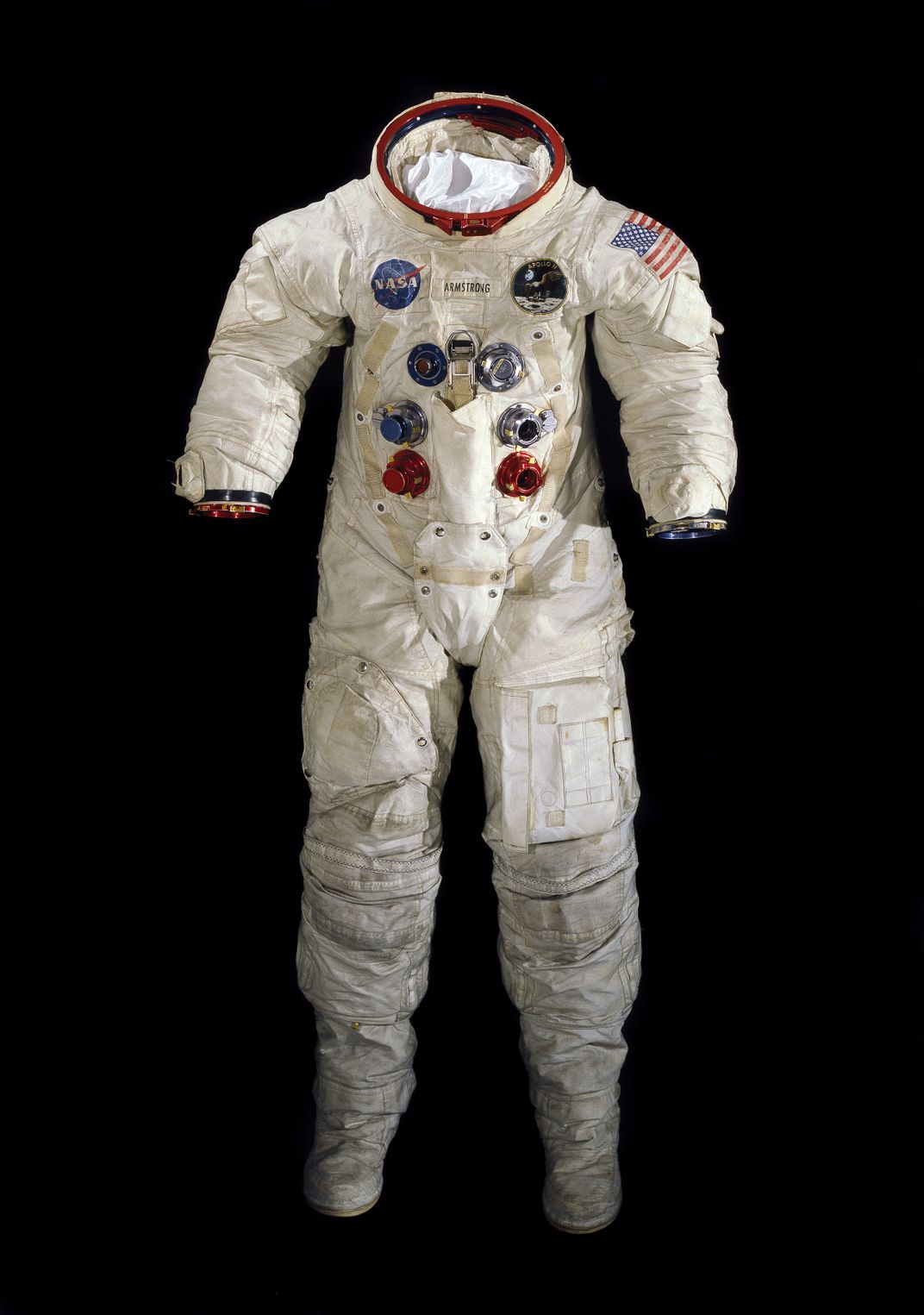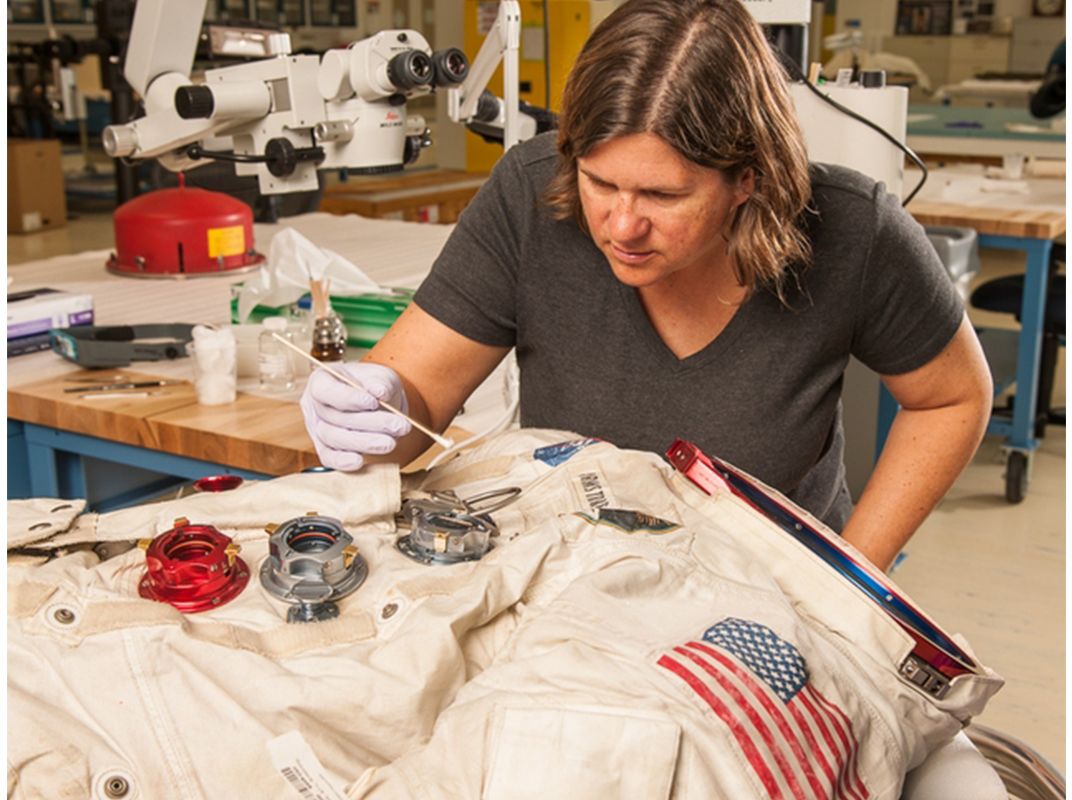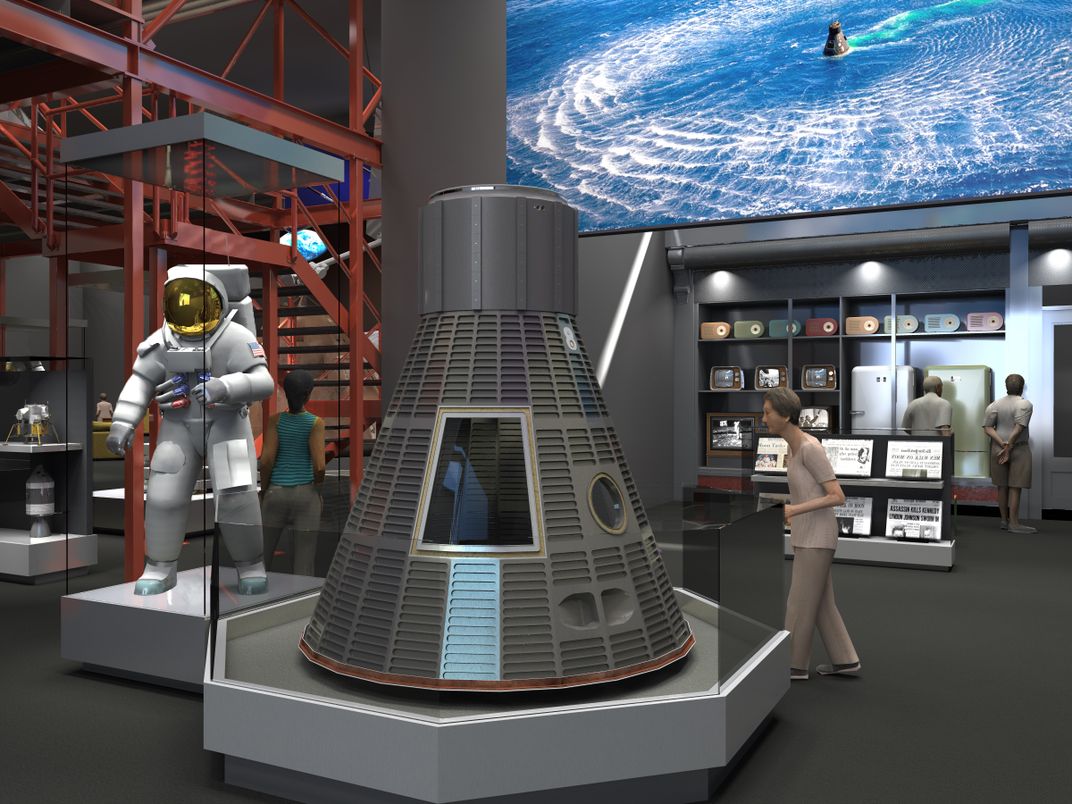Smithsonian Takes a Giant Step with Its First Kickstarter Campaign to Fund the Conservation of Neil Armstrong’s Spacesuit
On the 46th anniversary of the historic moonwalk, the spacesuit that made it possible is headed to the conservation lab
/https://tf-cmsv2-smithsonianmag-media.s3.amazonaws.com/filer/92/c1/92c139f1-43e0-41ae-94b5-2bbf1006d377/amstrong-suit.jpg)
UPDATE 7/24/2015: The Kickstarter campaign was successfully in reaching the goal of $500,000. Museum officials say that if the campaign can raise another 200,000, they will also be able to digitize and preserve for display Alan Shepard's spacesuit. The suit was worn during the first manned American space flight in 1961.
The Apollo 11 spacesuit Neil Armstrong wore when he became the first man to step on the moon 46 years ago July 20 is deteriorating, has been out of public eye for nine years, and is about to undergo extensive conservation.
So on the anniversary of that “small step for a man,” the Smithsonian Institution announced a plan of action that is, in its own way, a giant leap for funding the job with what the Institution’s first federal Kickstarter campaign. With a goal of raising $500,000 in 30 days—by offering incentives such as exclusive updates to 3D printed facsimiles of the space suit gloves—museum officials hope to be able to unveil a restored spacesuit by the time of the 50th anniversary of the moon landing four years from now, in 2019.
A year later, it will be part of a permanent “Destination Moon” exhibition already in the planning for 2020. The space suit restoration—and what conservators hope to learn about preservation of plastics and how to best display fragile historical items—may inform future conservation of historical items and even art. It may also usher in a new era of crowdfunding for federal projects, using the method that’s been used on 88,000 projects since 2009, from feature films to art projects.
Age and its original use have taken a toll on the artifact. A flight to the moon and back and additional wear and tear from being on display has tarnished the suit that was custom made for Armstrong. Stains of unknown origin are on a leg pocket; nobody knows exactly who hand stitched repairs to the knee and other areas either, says Cathy Lewis, curator of international space programs and spacesuits at the National Air and Space Museum. NASA scrubbed down the suit when it came back from the moon “to make sure there were no moon bugs.”
They even took it to a commercial dry cleaner’s one time, Lewis says. “That was the current standard practice in maintaining and cleaning textiles, even in the museum environment at the time.” NASA sent the suit on a 50-state tour with the Command Module Columbia before the Apollo 11 artifacts were donated to the Smithsonian in 1972.
At first the artifacts were displayed at the Arts and Industry Building until Air and Space opened its doors on the Mall in 1976. “We had periodic inspections of the suit over the years,” Lewis says, “and we decided to take it off display in 2006 to really let it rest for further study.”
The Smithsonian’s federal funds—about 70 percent of its resources—are restricted to safeguarding collections, research and the costs associated with operating and maintaining the museums. But exhibitions, public programs and the recent digitization of the collection have largely been privately funded.
Lewis says that Kickstarter is a natural for the Air and Space Museum since the museum, too, relies on a wide range of people including those who may not have been involved with the Institution before. “It’s the kind of project that’s defined with steps with a goal in mind of getting the suit on display. Therein lies the slogan, ‘Reboot the Suit.’”
A Reboot the Suit poster is available to those pledging $11; a Reboot the Suit T-shirt for those pledging $46. Progress on the 30-day campaign can be followed with the hashtag #RebootTheSuit.
On the higher end, 20 people who pledge $1,600 will get a 3D print of Armstrong’s space glove; a $5,000 pledge is rewarded with a personal museum tour from Gen. John R. Dailey, the director of the National Air and Space Museum, who appears in the 3-minute pitch video at the Kickstarter site saying “this suit represents one of the greatest achievements in the history of the United States of America” and declaring: “This is an epic endeavor, but we can do it with your support.”
The way Kickstarter works is that if a project reaches its goal, each of the backers’ credit cards will be charged on the final day. If the goal is not reached, nobody is charged.
A number of other Smithsonian museums are looking at how the Kickstarter project will do, with ideas of their own to fund.
“This is the first time we’ve teamed up with a museum in this way,” says Kickstarter cofounder and CEO Yancey Stickler.
Accordingly, announcement of the Institution’s first such campaign was held up until the last minute.
If there’s ever been a federal agency that’s used Kickstarter, says Lisa Young, objects conservator at the Air and Space museum, “we don’t know of one.”
Today, the spacesuit sits in a morgue-like container with consistent temperature and humidity. The museum is working on new ways to display it in cases that will be just as constant as storage.
Donations will also fund research in the suit history, the digitization of the suit such that anybody could make a 3D print of it, and CT scans to determine all the layers used in the suit—21 in all—that allowed the sealed suits to become, on the moon, its own space craft.

Because parts of the suit were made in Latex, the same kind of movable fabric used in girdles and bras, the materials have also gotten brittle or have interacted with other kinds of materials in the suit to hasten the deterioration.
“You have a lot of synthetic materials that were invented in the 1950s and people didn’t know how they would hold up over time,” says Young, the conservator who works at the Air and Space museum’s Steven F. Udvar-Hazy Center in Chantilly, Virginia, where the suit is stored. “But the primary challenge is not being able to take any of the materials apart to treat them, like we would do with other objects.”
Planes can be dismantled so the metals and textiles and plastics can all be treated separately. With the space suit in 21 layers “we can’t really take anything apart to treat it,” Young says.
The historical nature of the suit suggests they shouldn’t even try to take it apart. “It was Neil’s suit, and it went to the Moon, and it was the actual one he wore.” They could do that with suits that were in development for the trip, she says, “We just wouldn’t do that with this one.”
And don’t think the white Beta cloth material will be restored to its shiny white original hue. That it is covered in gray lunar dust embedded into the fibers of the suit is something of a badge of pride.
“We’re not going to take any of that off,” Young says.
“The lunar dust we consider to be a historical artifact,” Lewis says.
There will be some work on how to display the spacesuit without having a mannequin inside. “In the past, it’s really hard to get a mannequin into a space suit,” Young says. You have to actually build them within the suit themselves, because the suit is sealed with a pressure layering, so with the neck ring, there’s no exit at the top of the zipper.”
Some past displays used the same kind of commercial mannequins used in stores; others were custom made so the faces looked like the individual astronauts. Neither was so good for the fragile material itself, which were built to have a life of about six months—not 50 years.
“We’re hopeful that we can make a case that will protect the suit, just about as well as it would be if it was in a storage container,” Lewis says. “We want to share the collection with the public, and we have to find a way to do that for the longest period of time so we have it for another 50 years to share with our visitors.”
And if someone donates that top level of $10,000, do you think that maybe they could just try it on one time?
“No,” says Young. “There will be no touching of anything. They can come see it. But there’s no touching.”
And if they make more than goal of half a million dollars in 30 days, Young says, the money won’t go to waste. “There are other suits that need to be conserved,” Young says.
Four space suits will be among the 400 objects when the new “Destination Moon” opens in 2020.
/https://tf-cmsv2-smithsonianmag-media.s3.amazonaws.com/accounts/headshot/RogerCatlin_thumbnail.png)


/https://tf-cmsv2-smithsonianmag-media.s3.amazonaws.com/accounts/headshot/RogerCatlin_thumbnail.png)